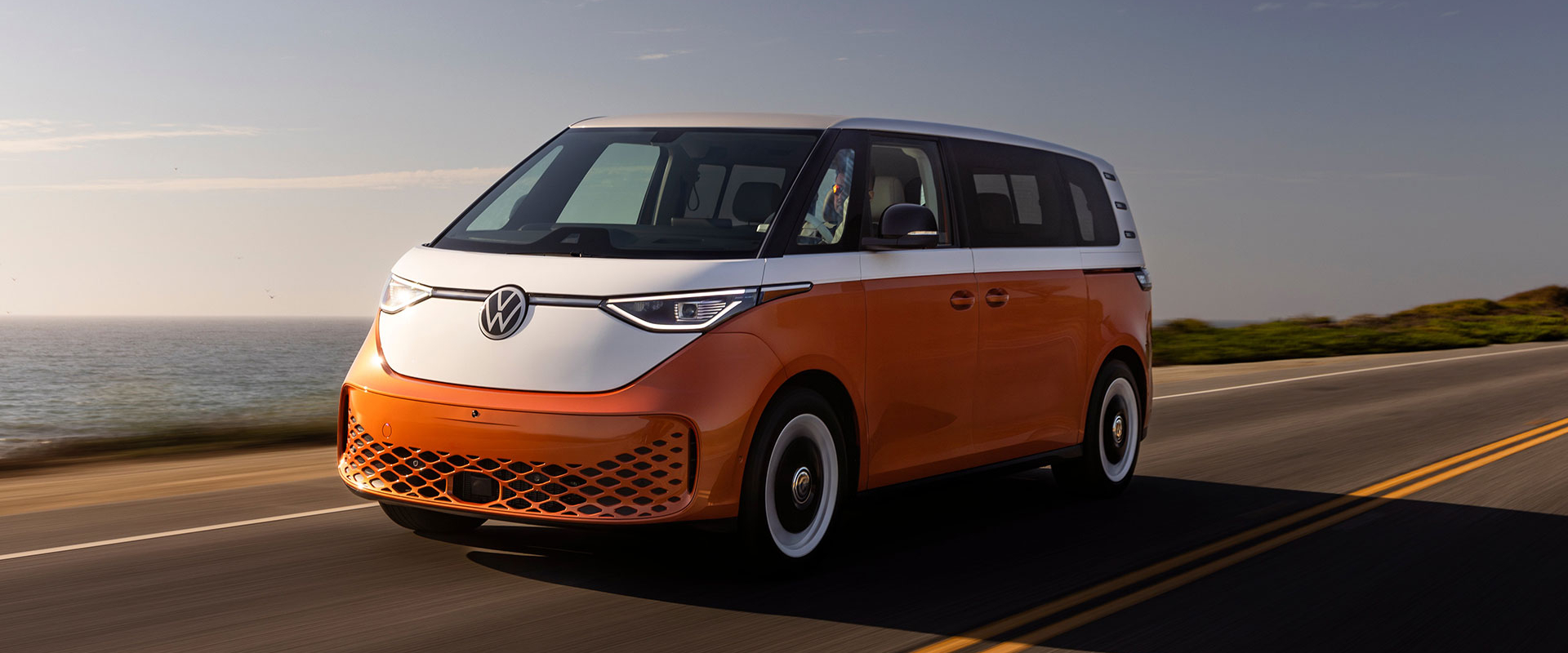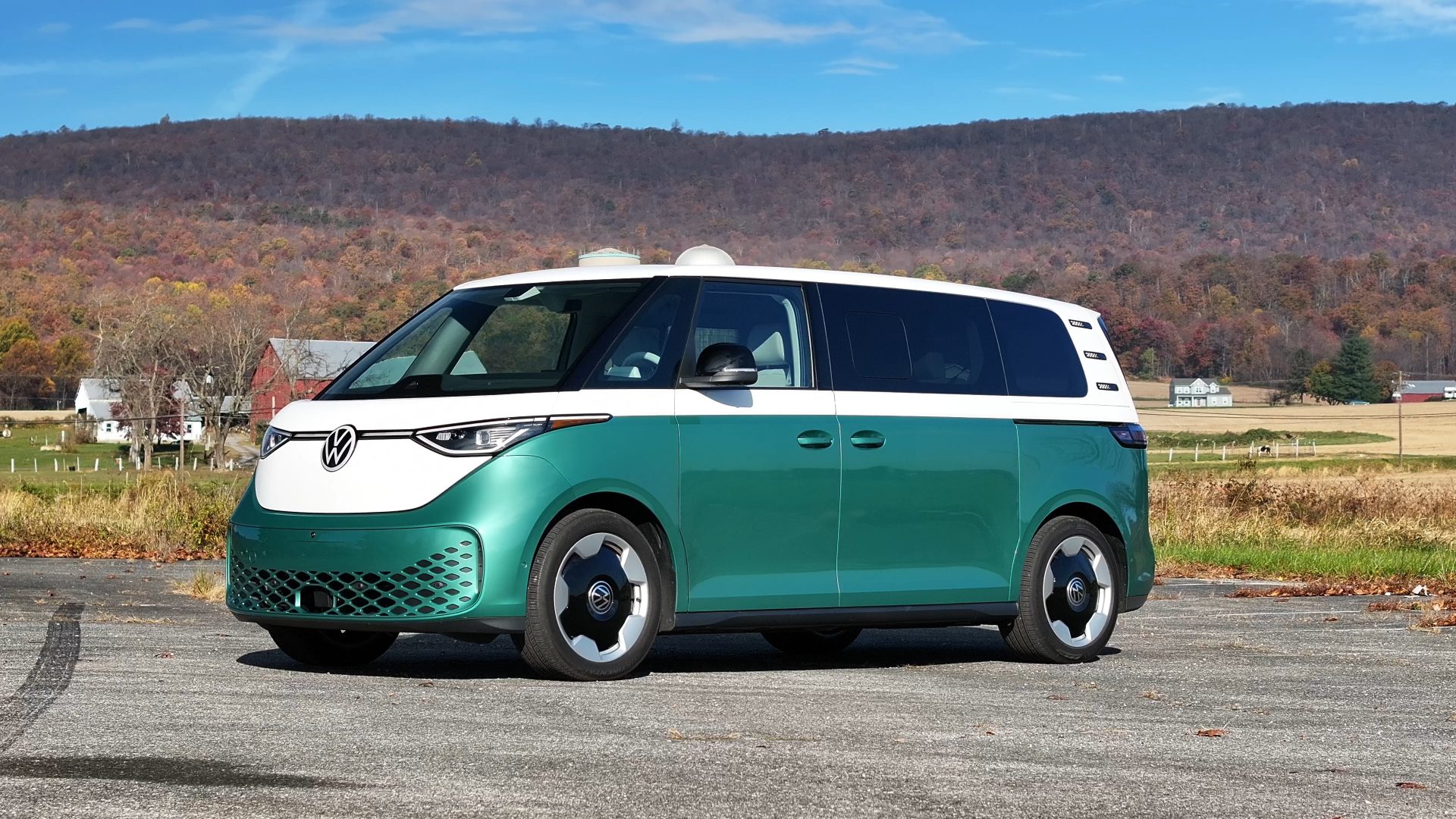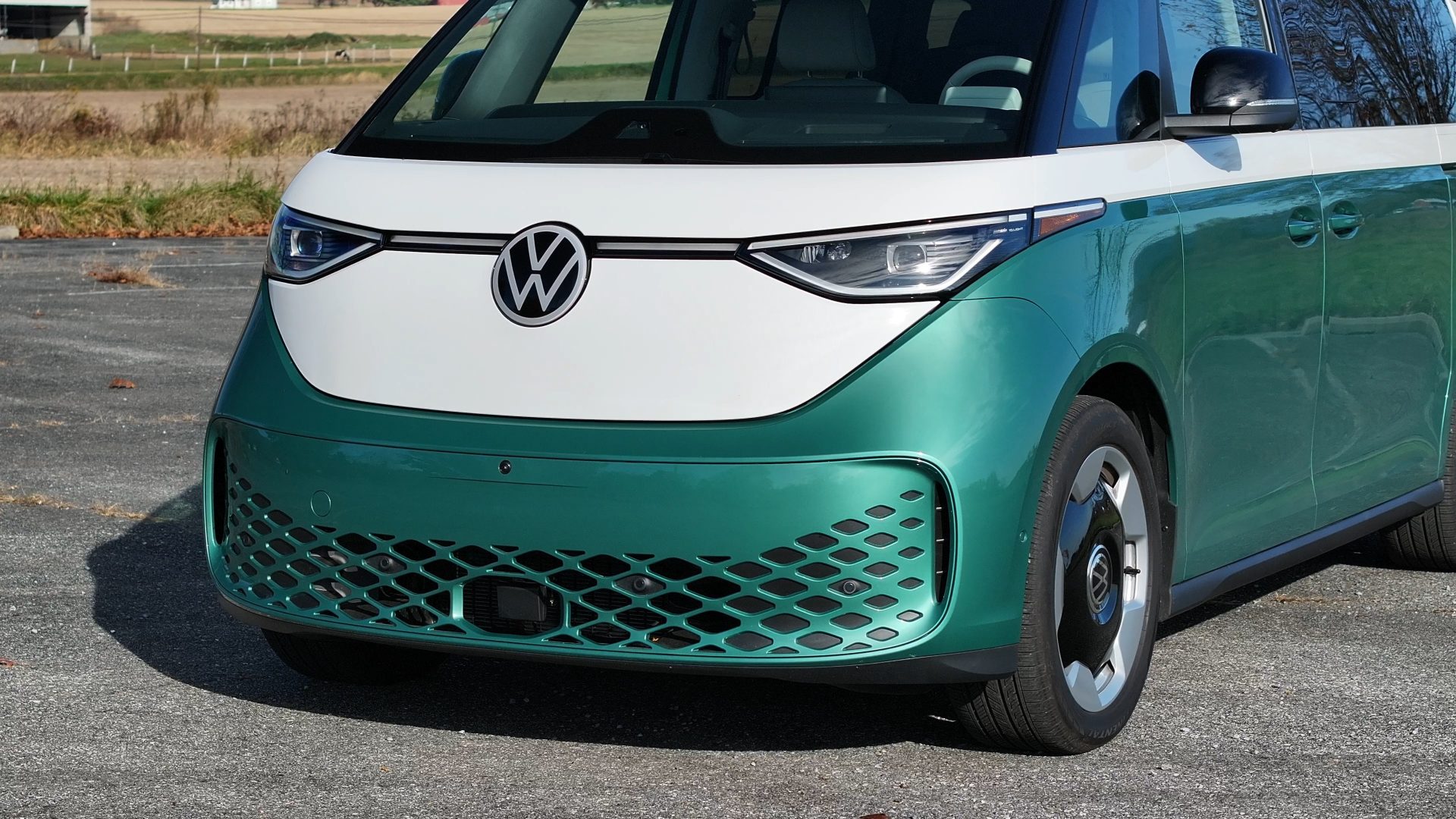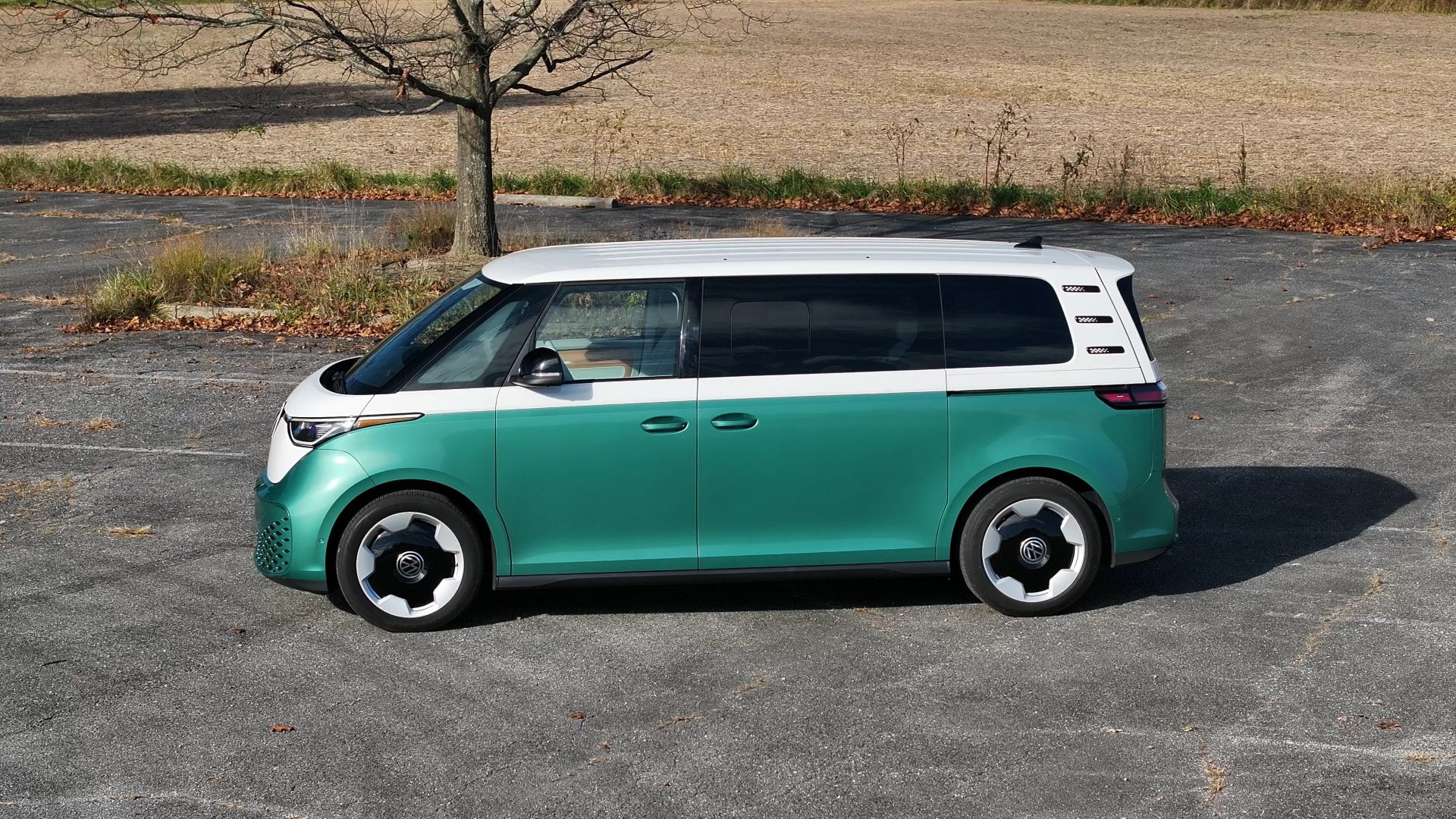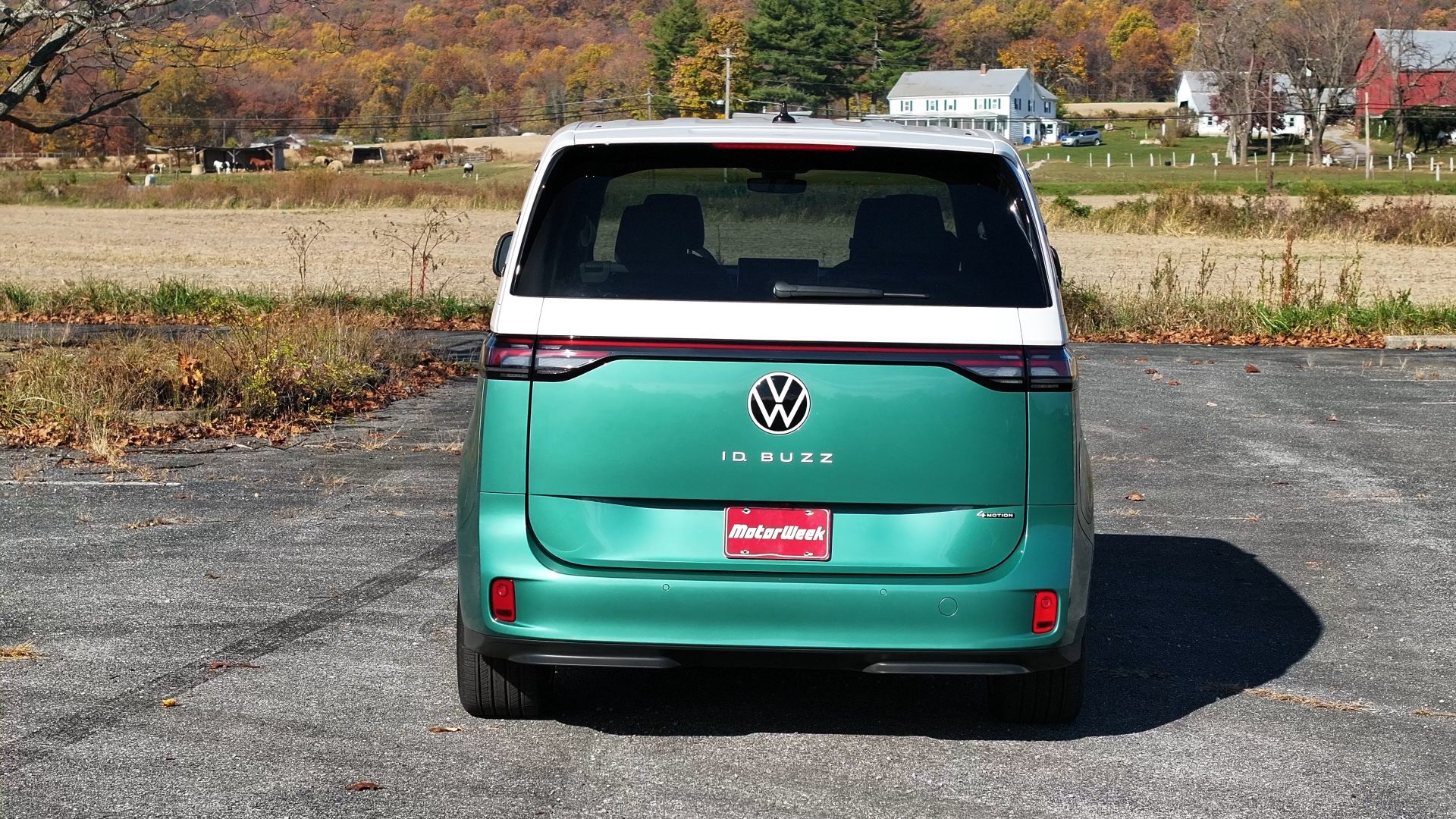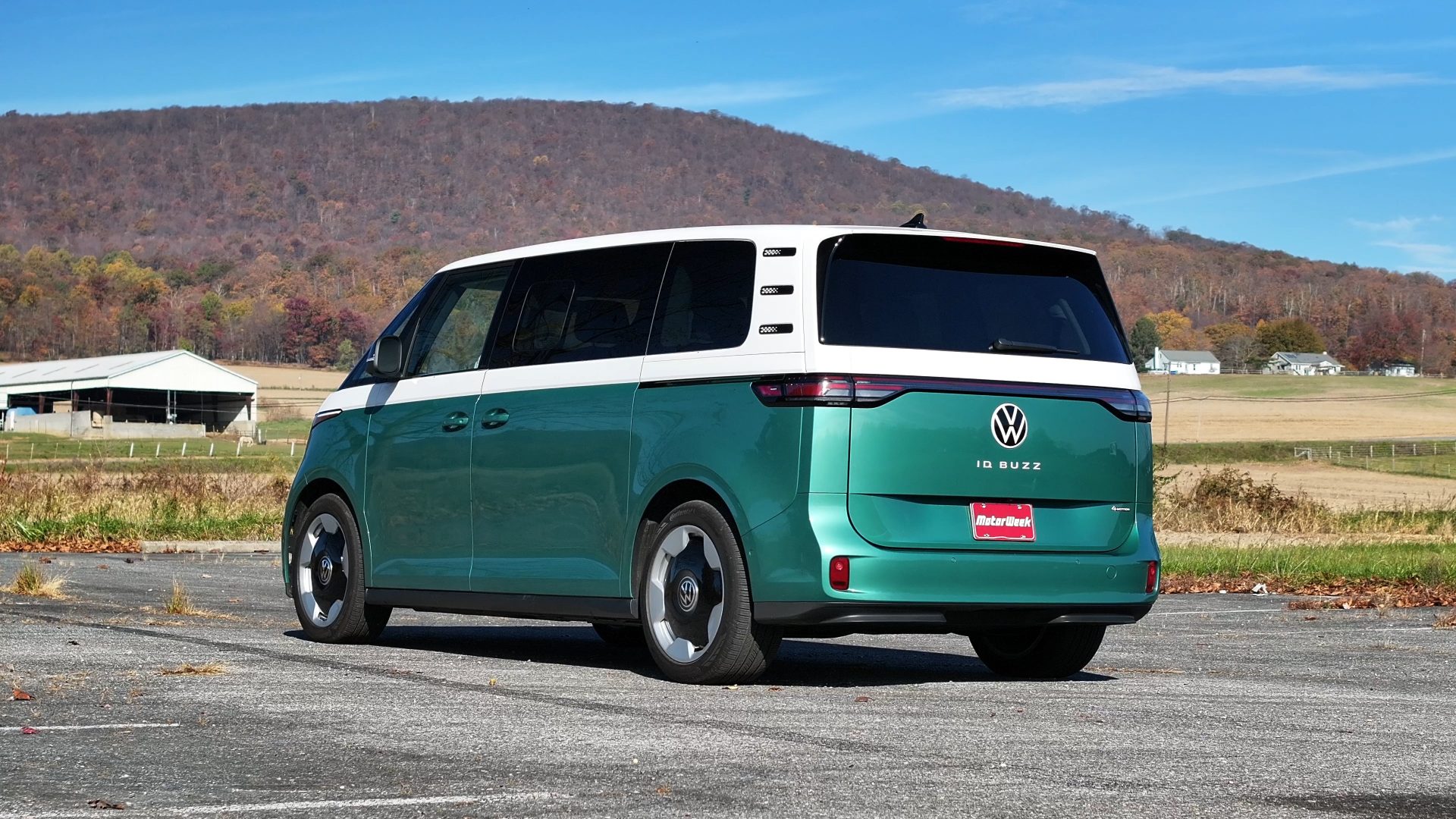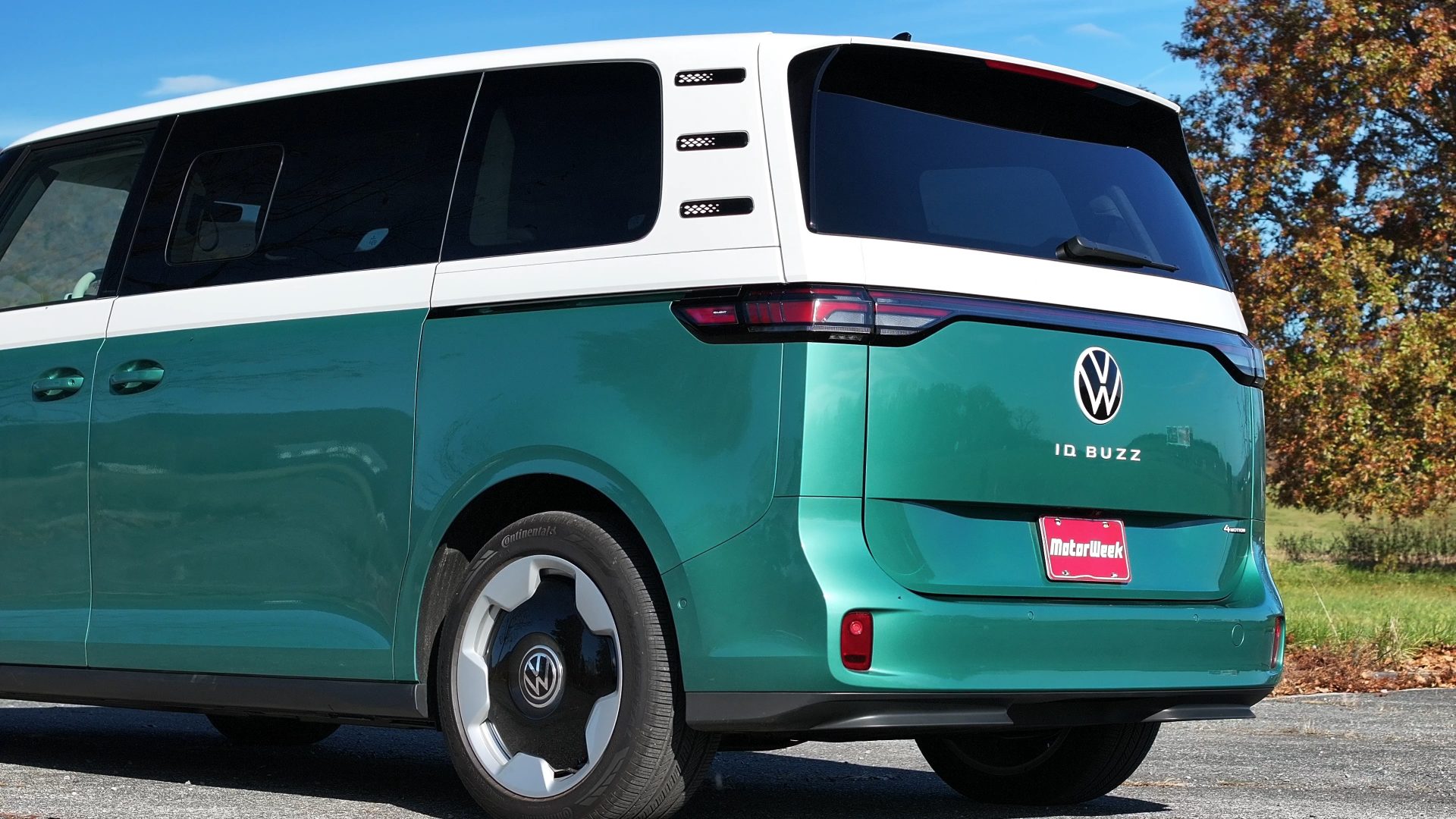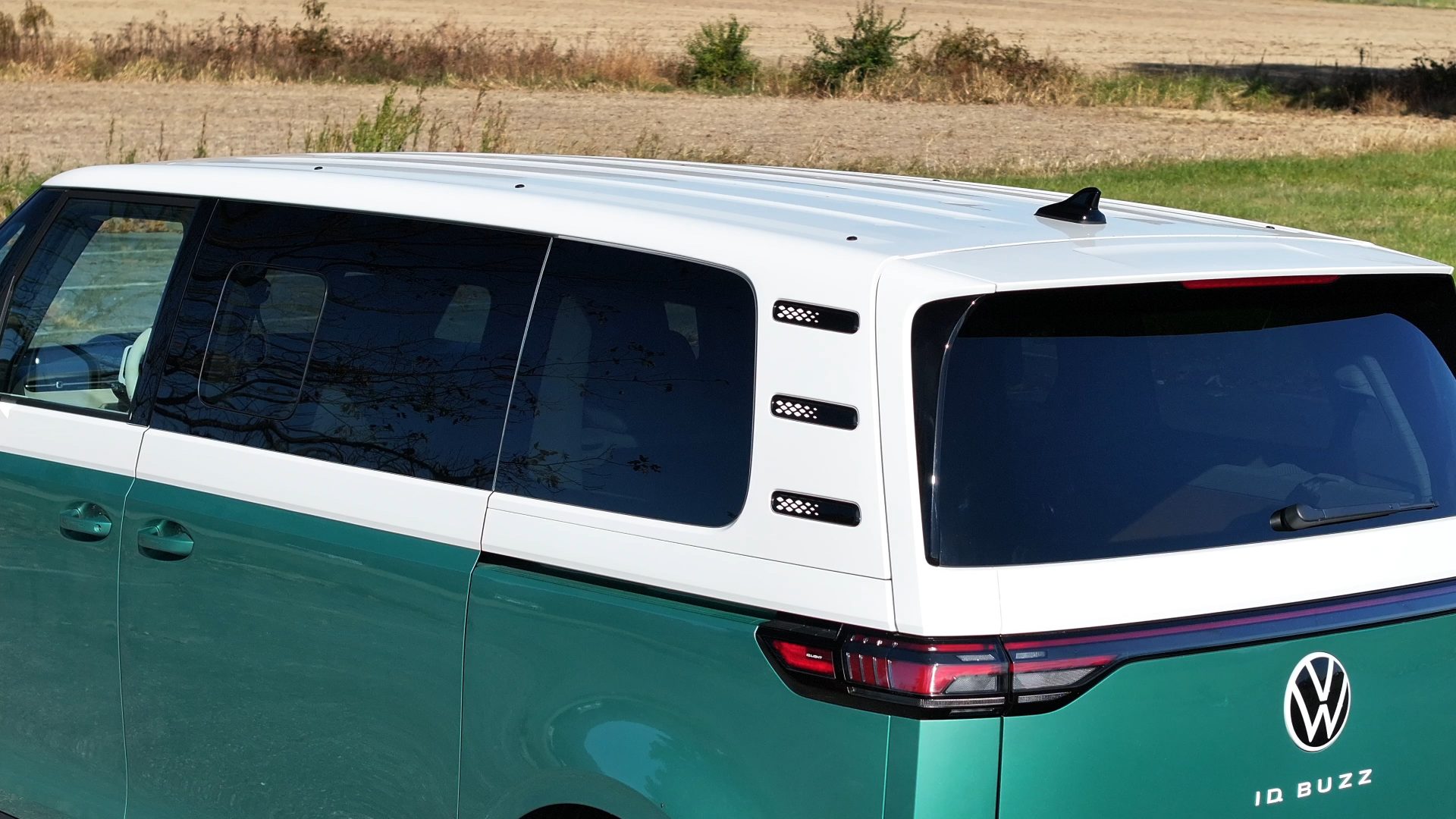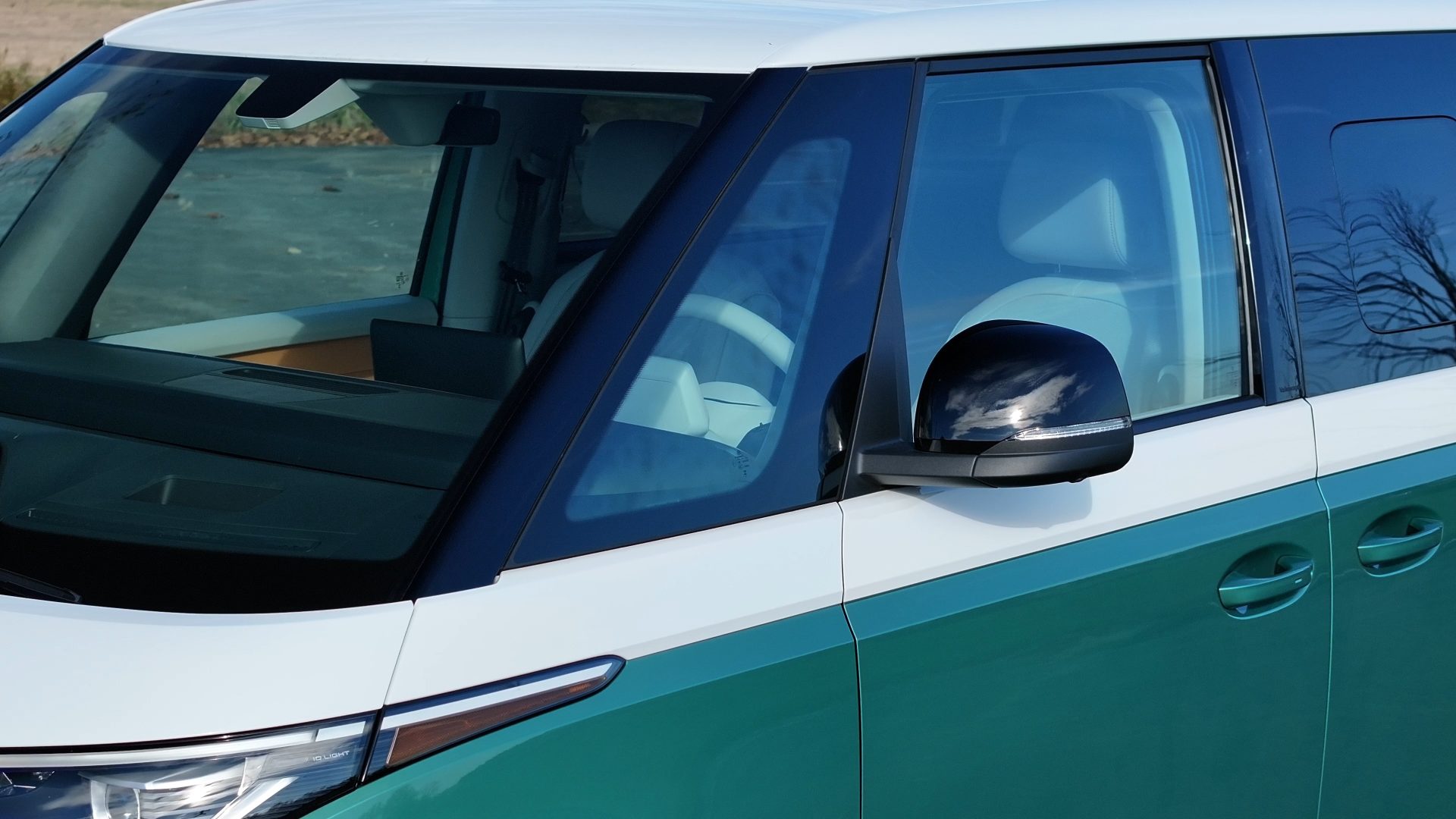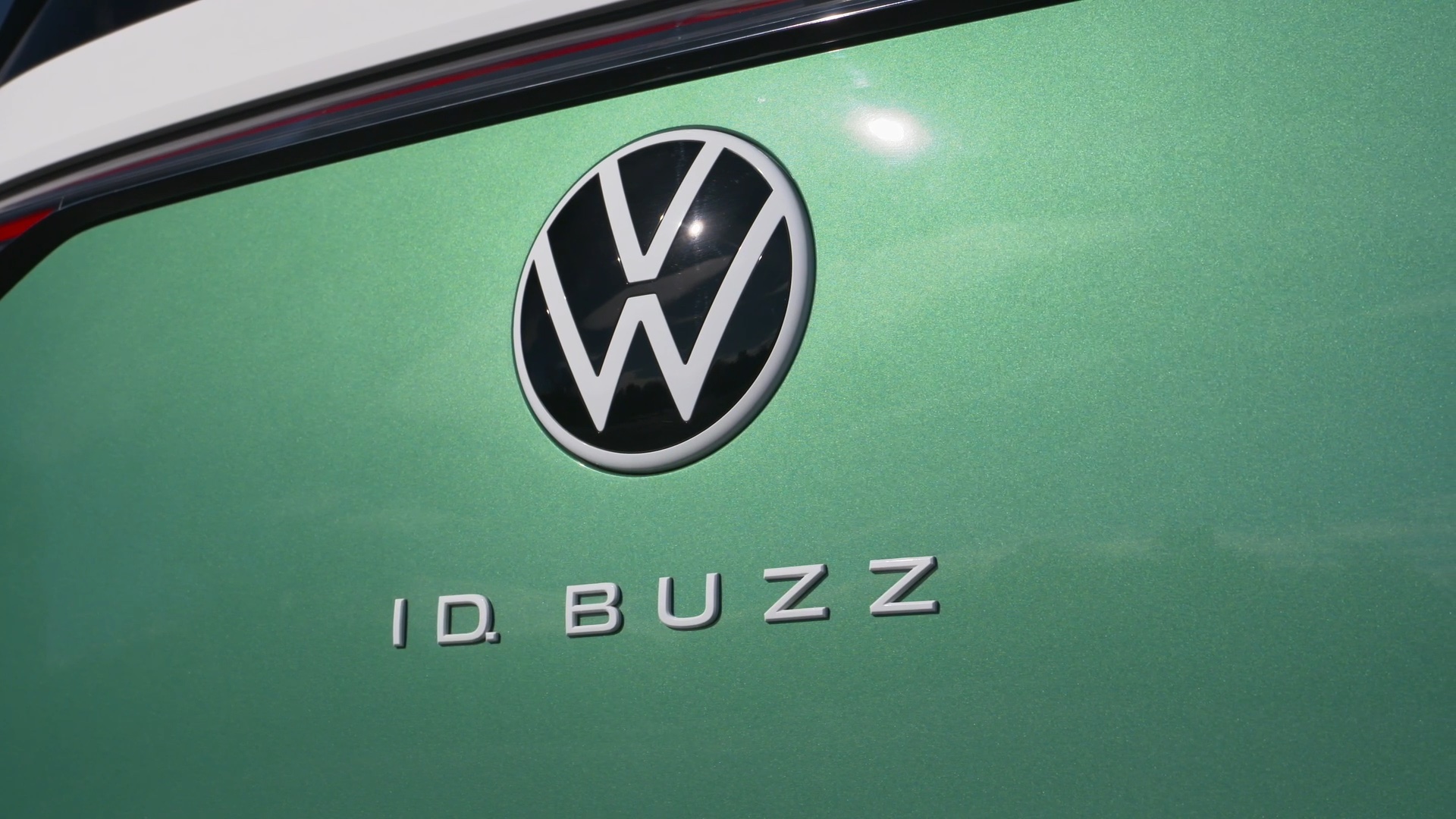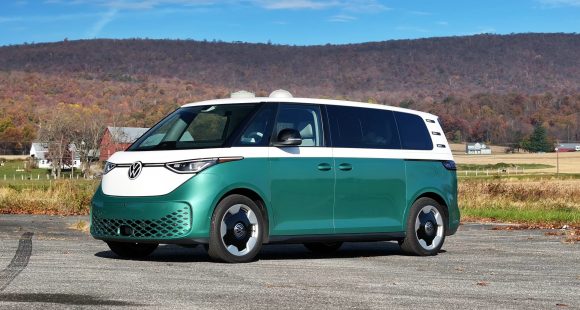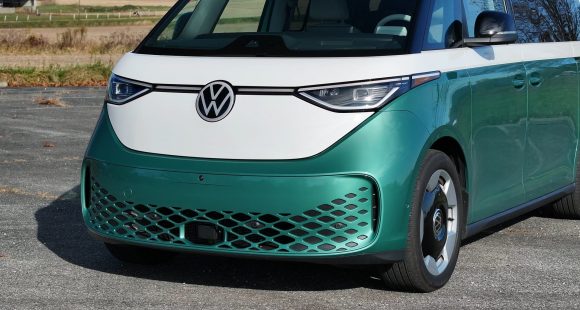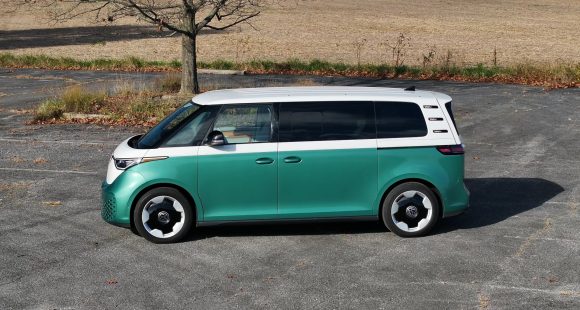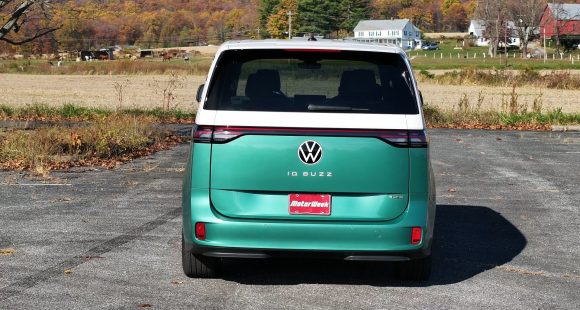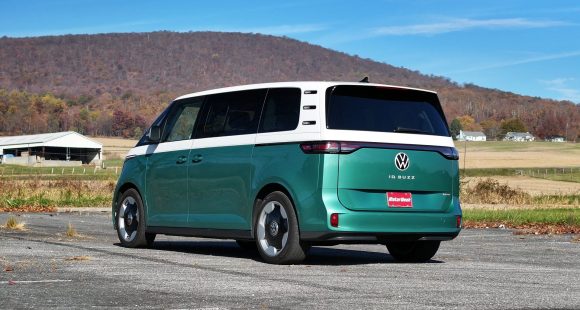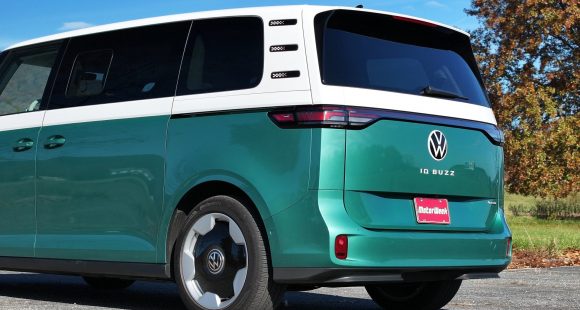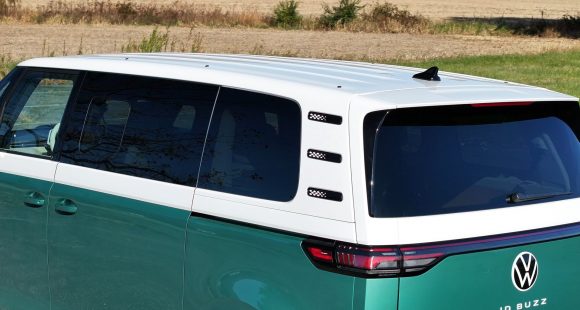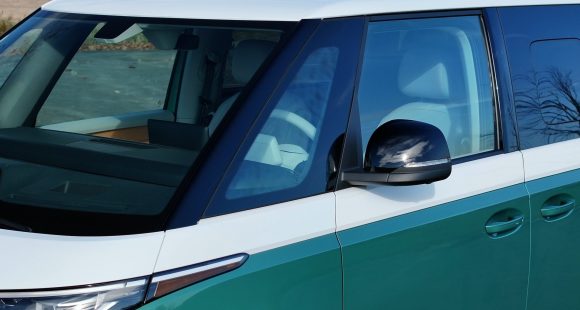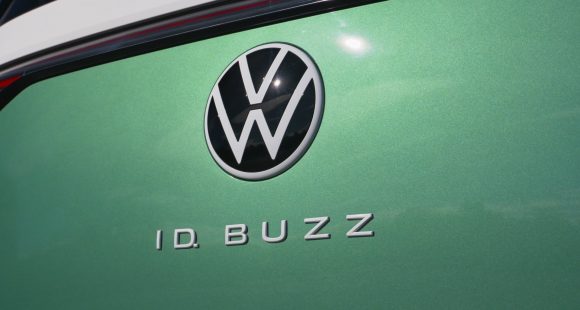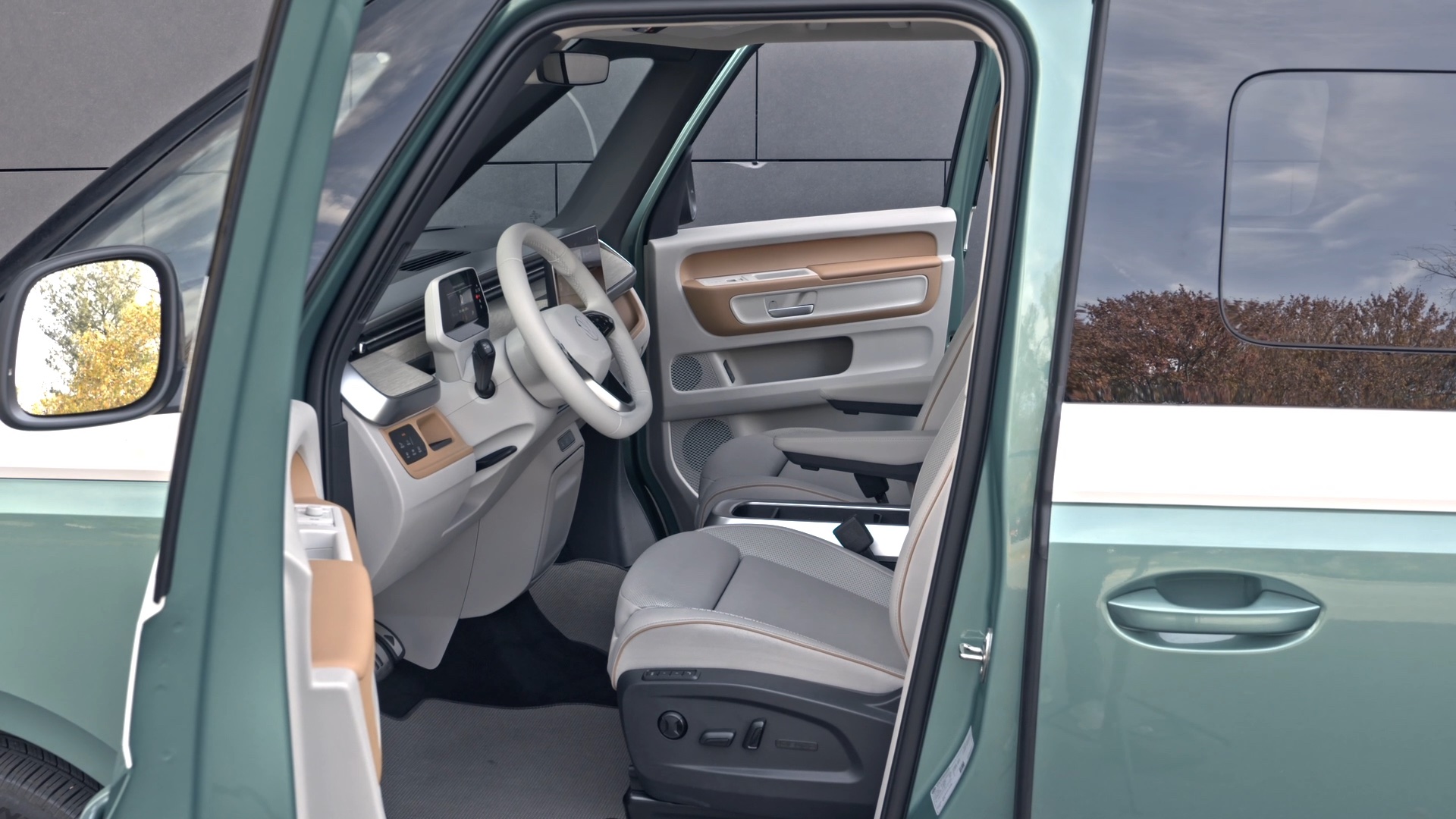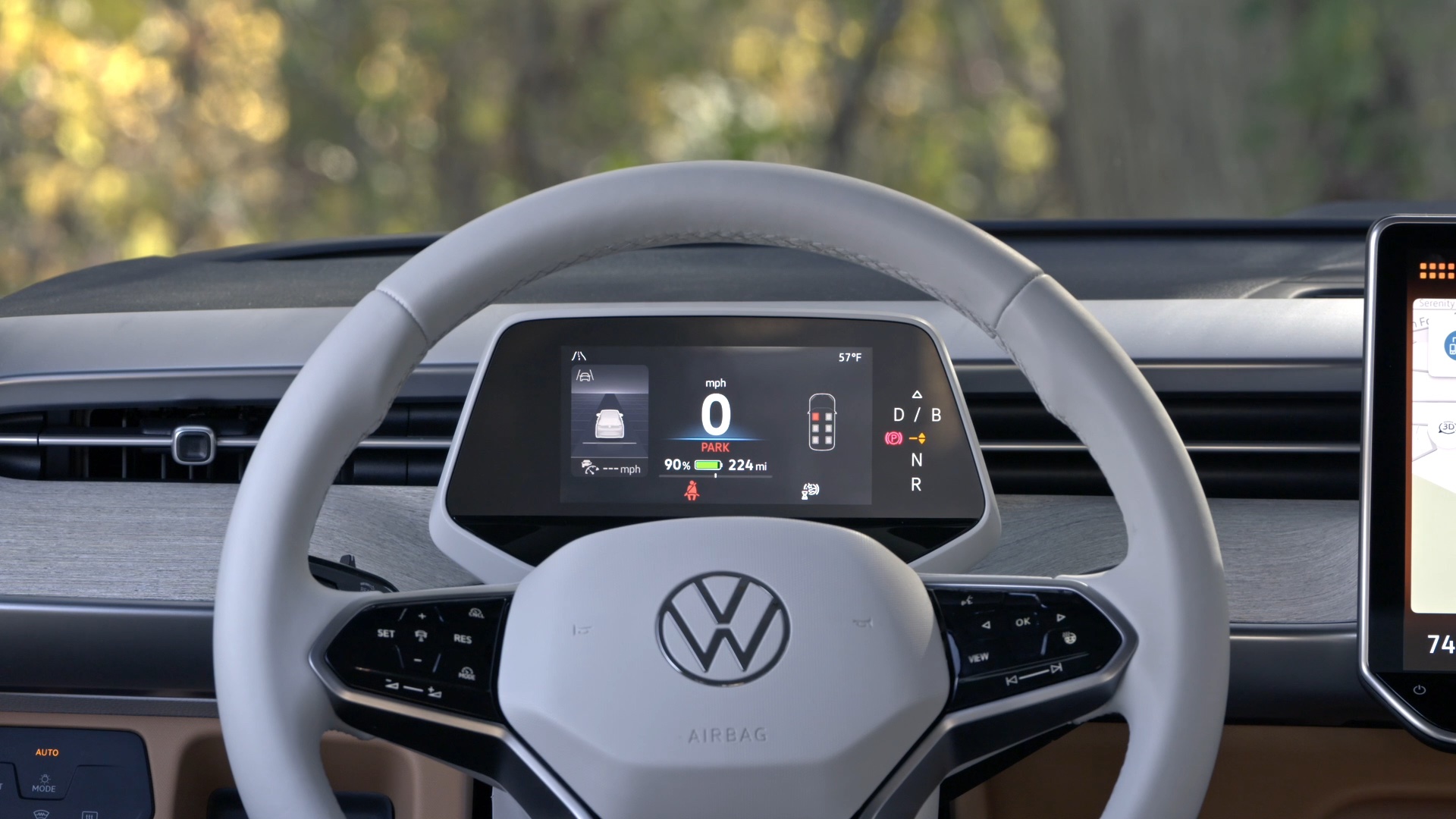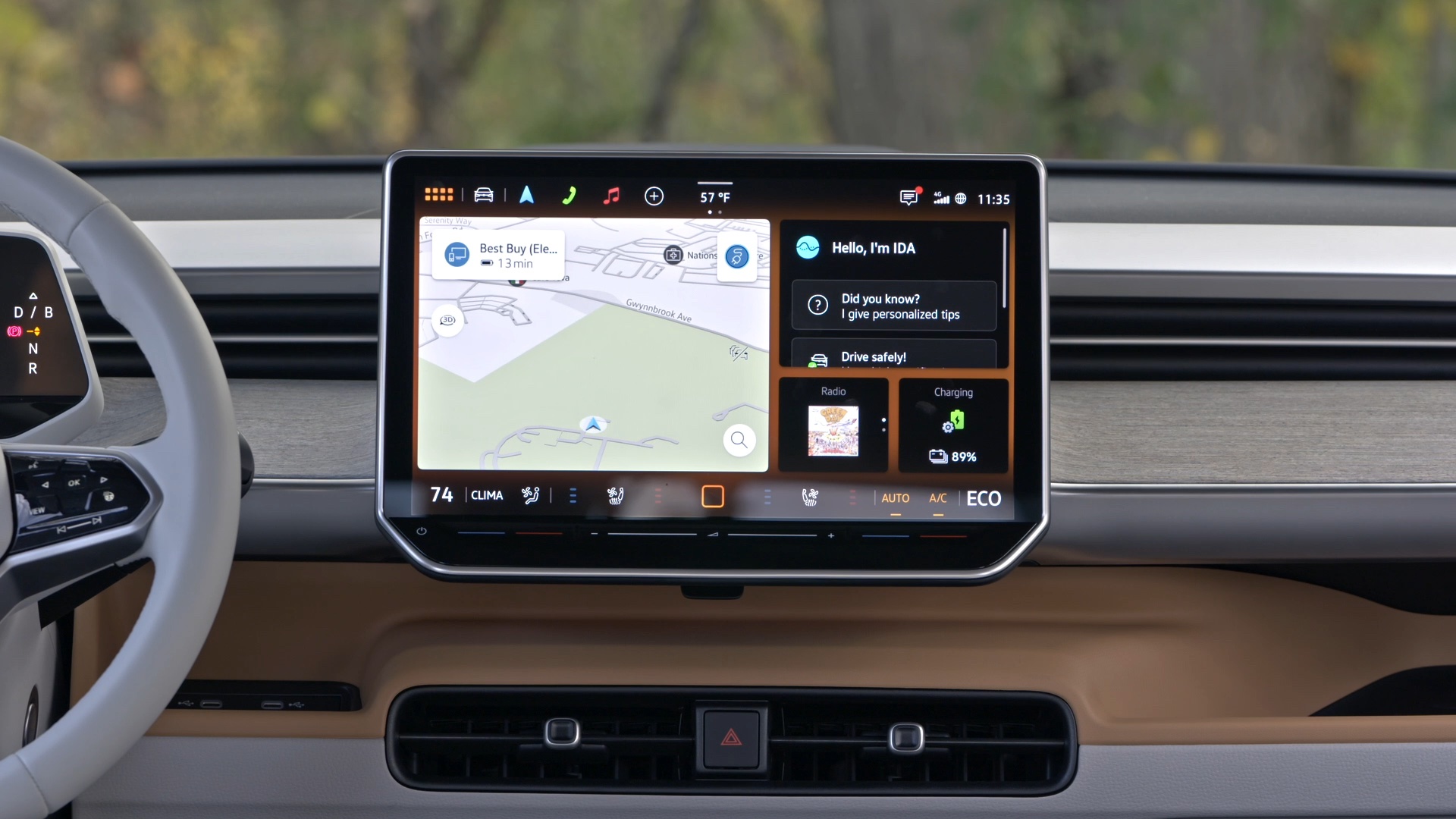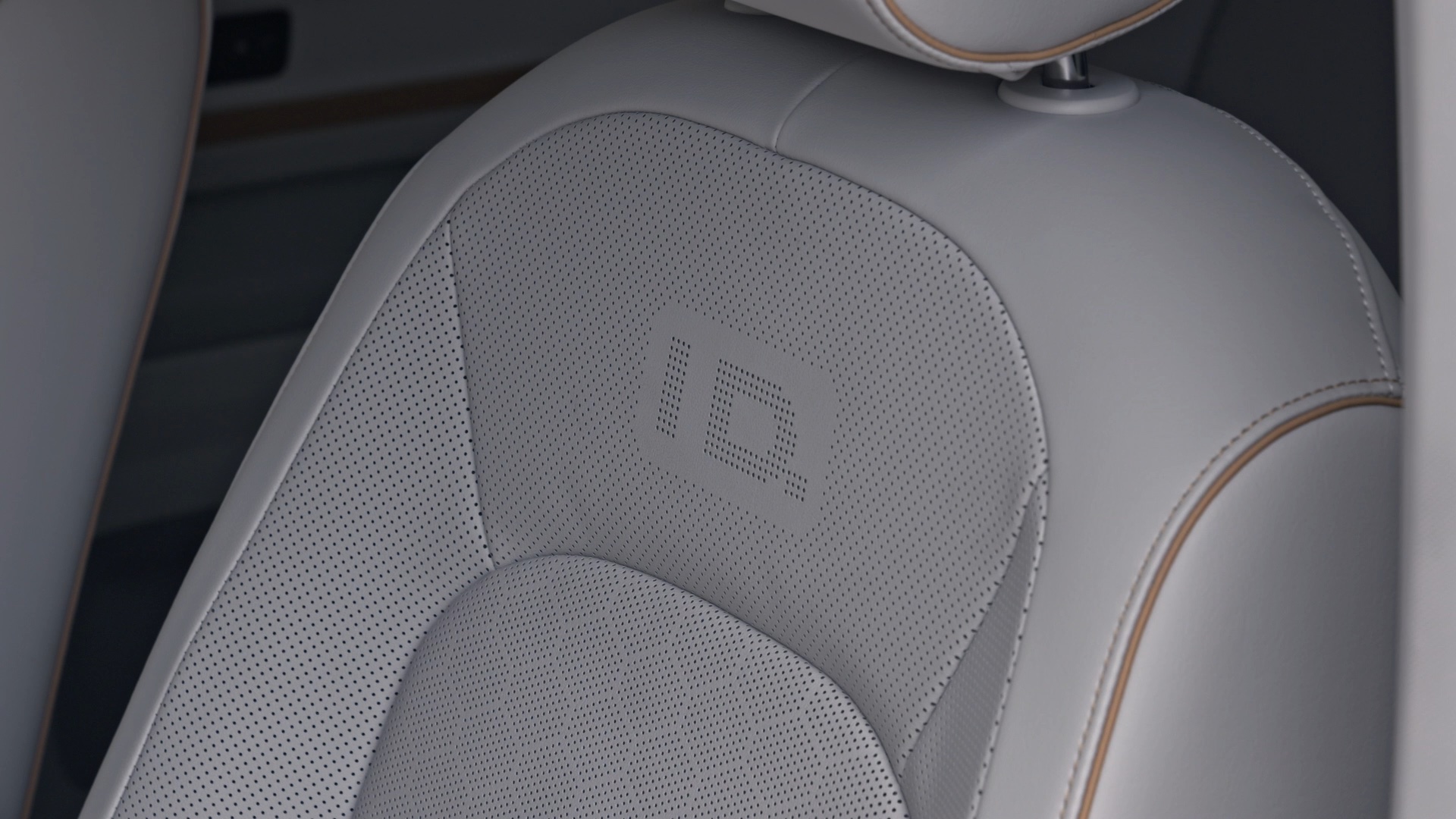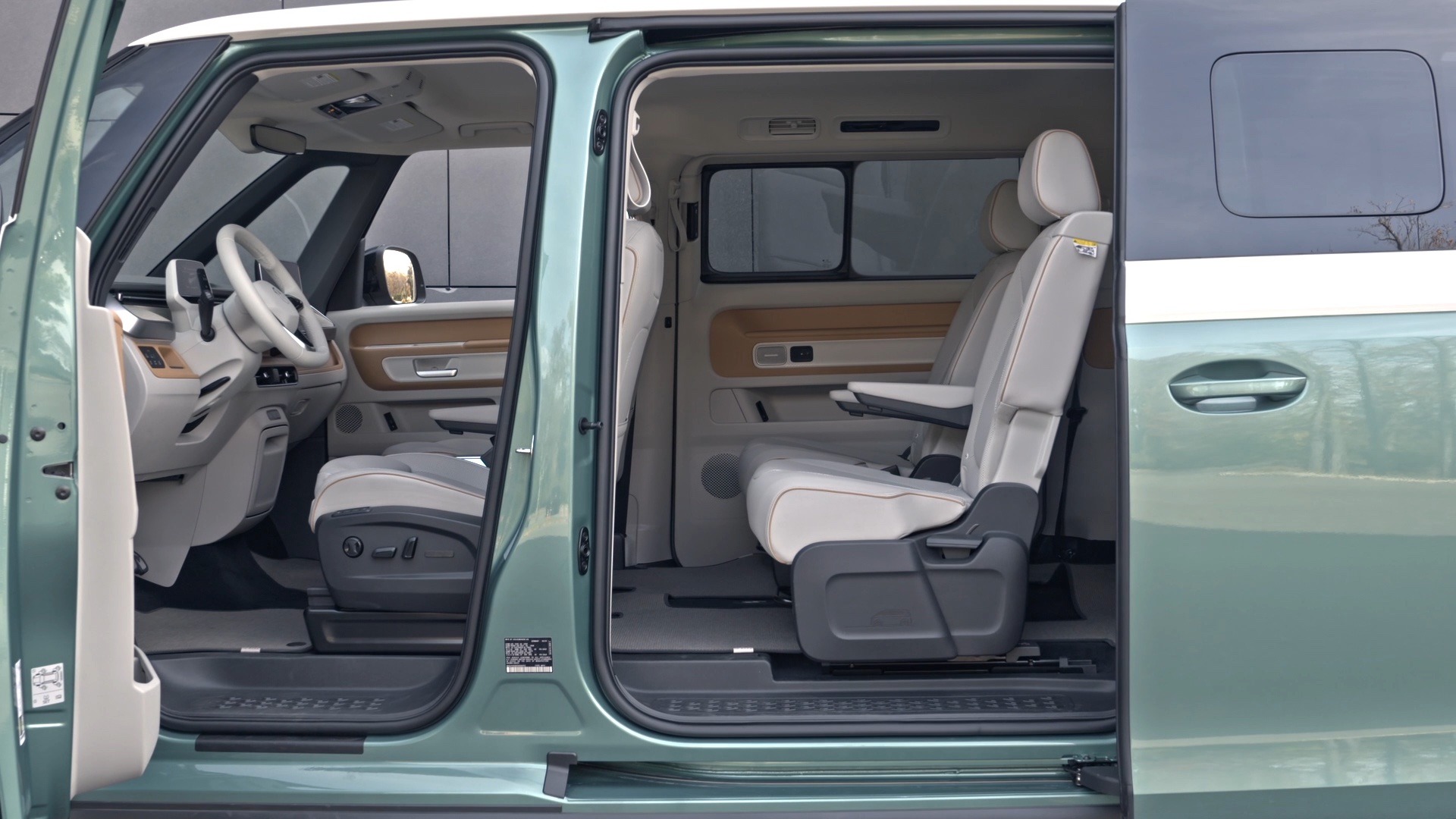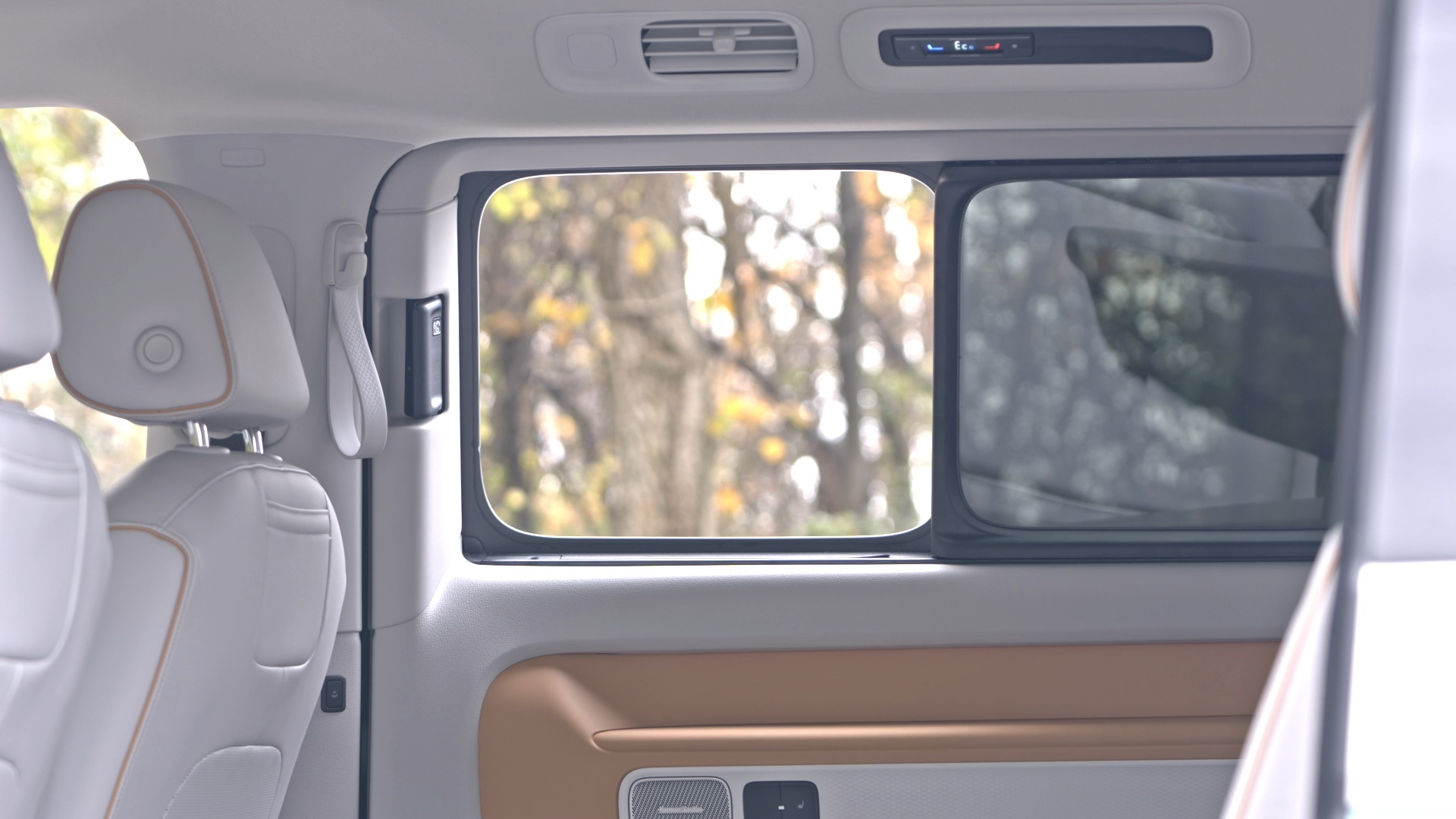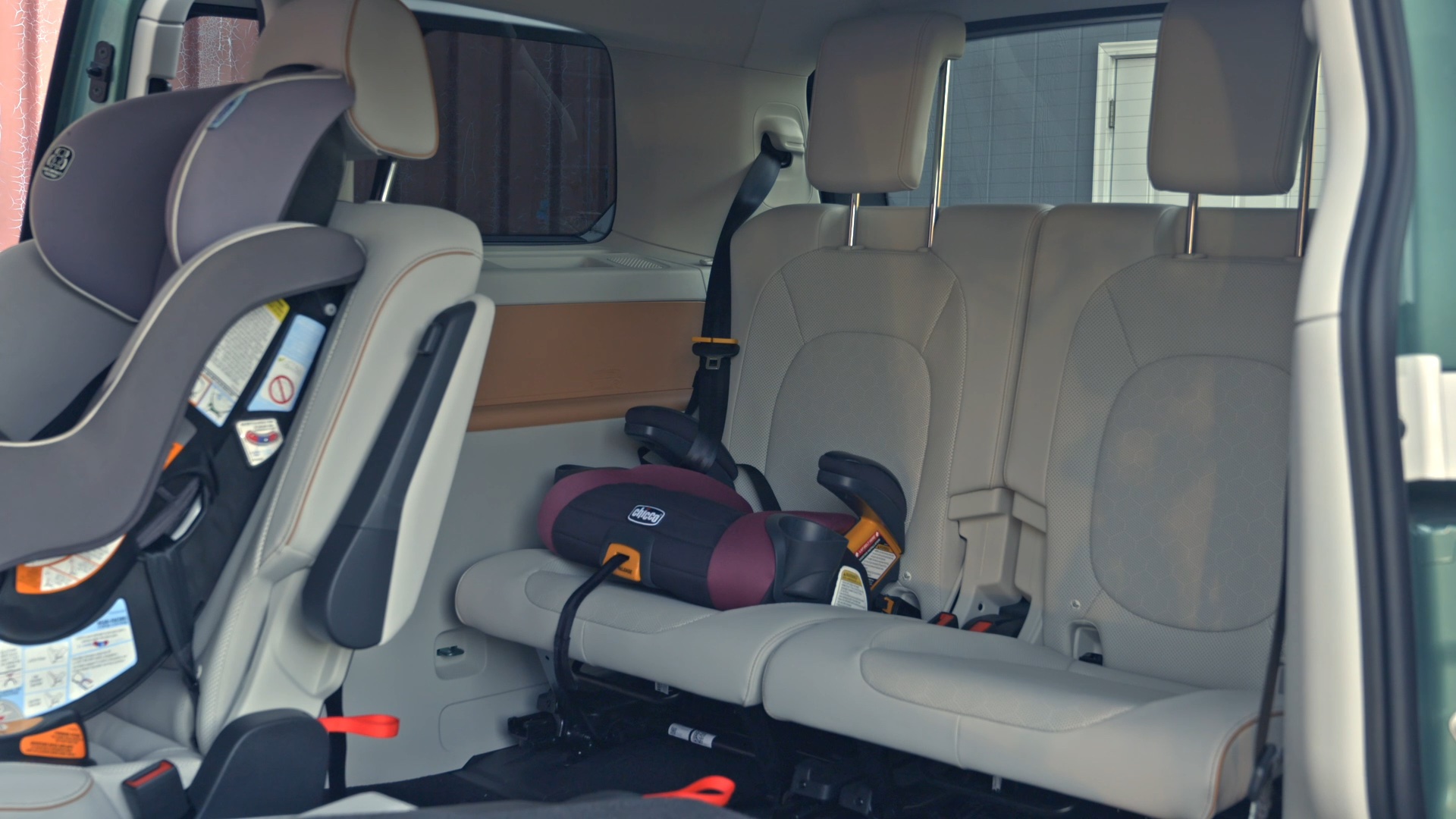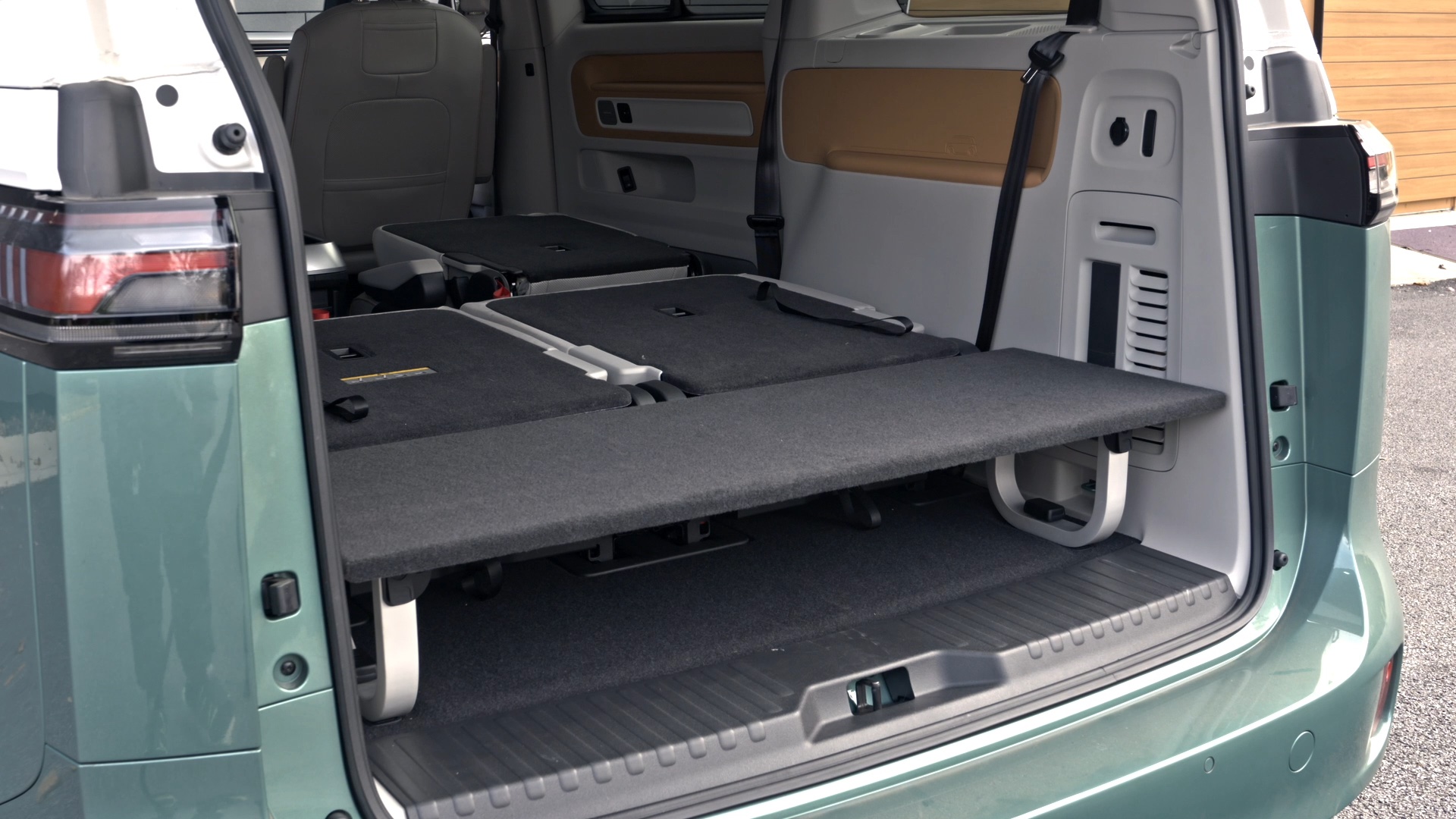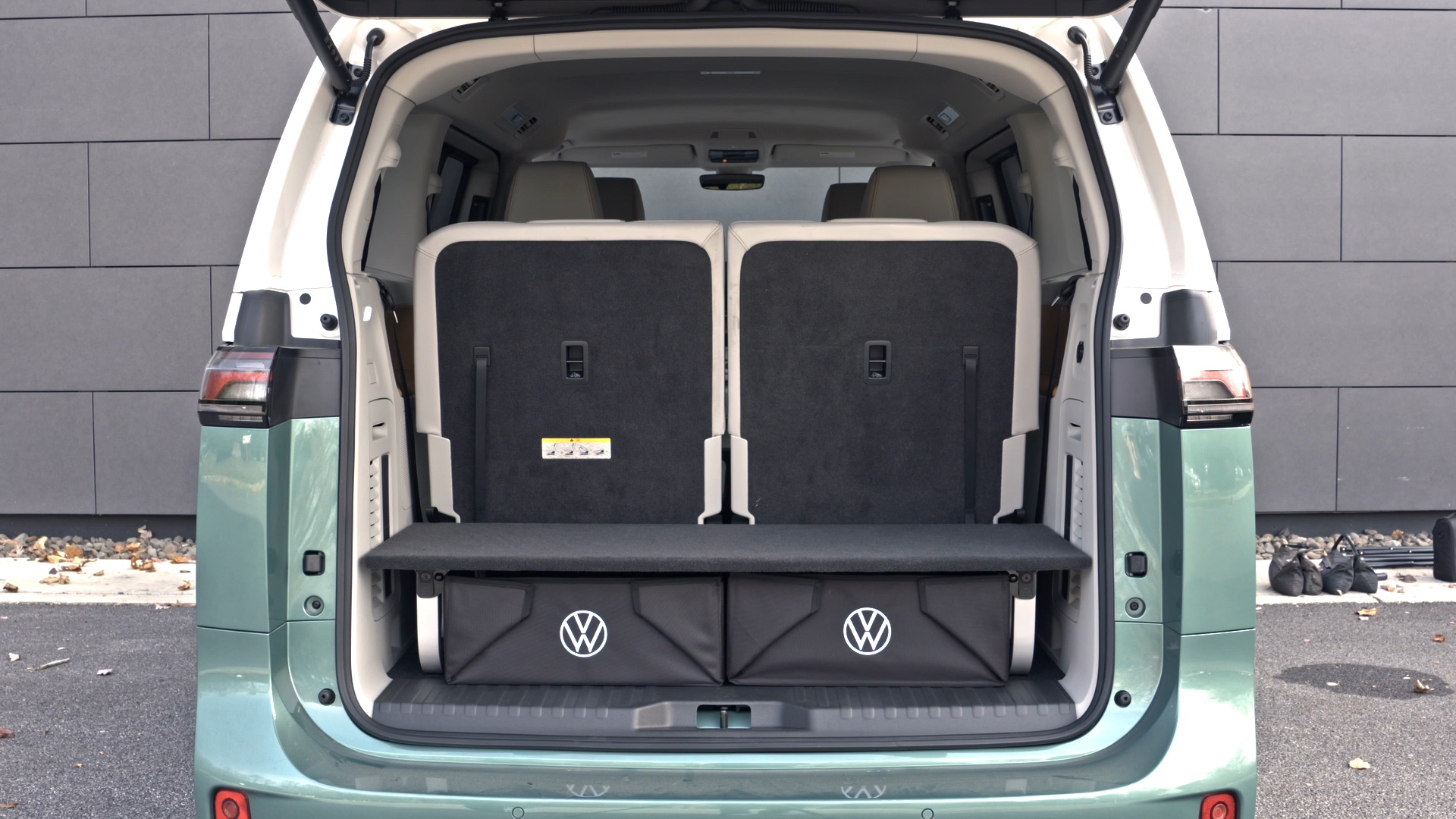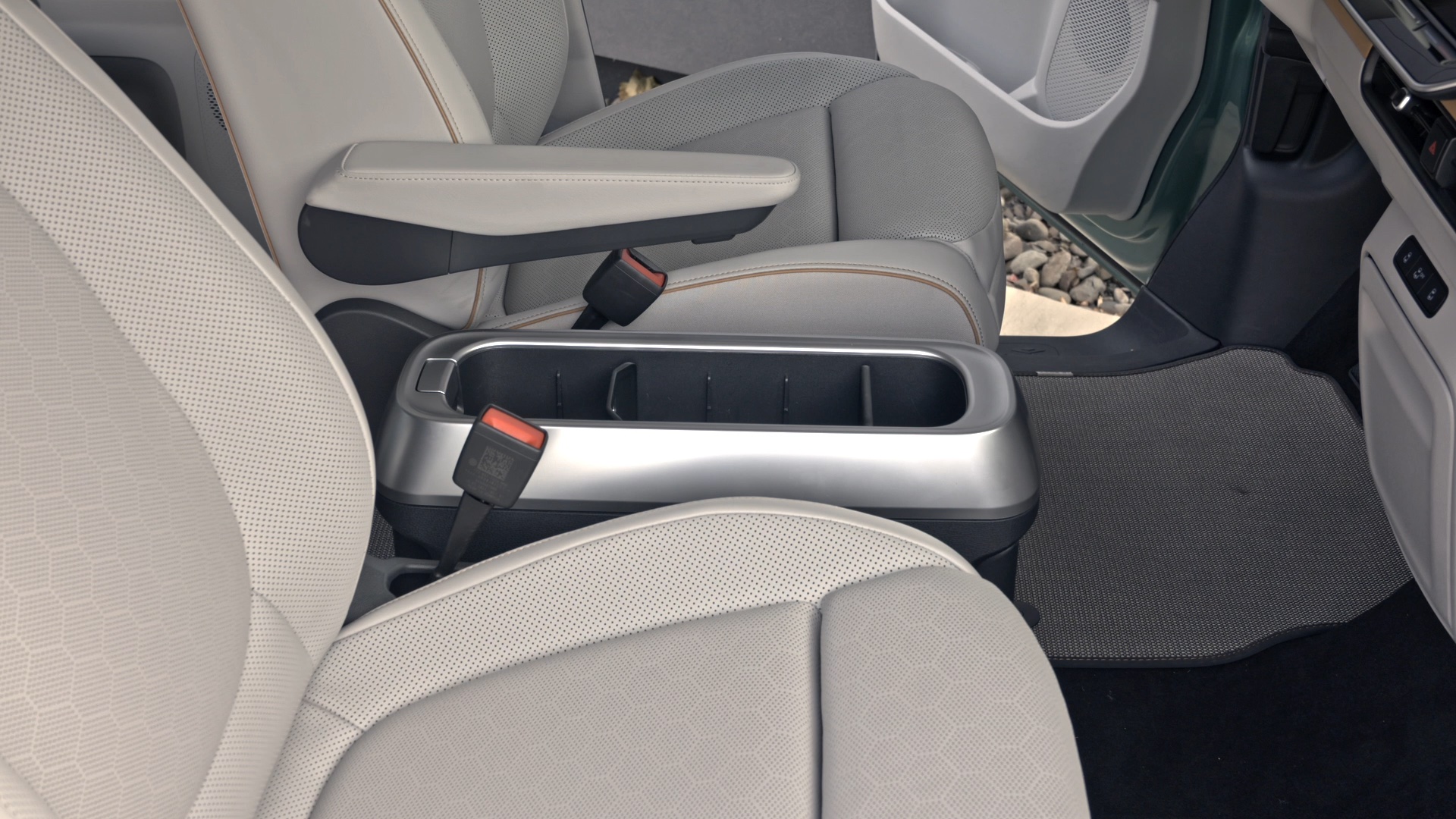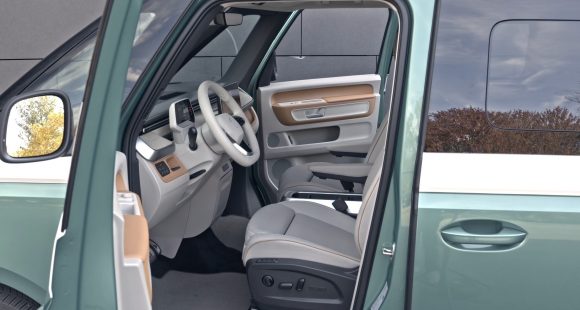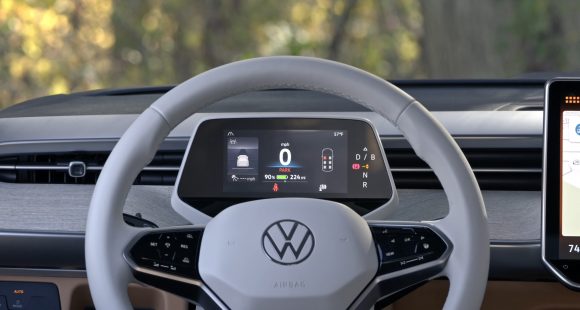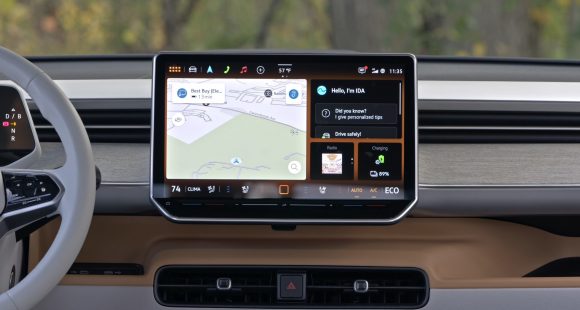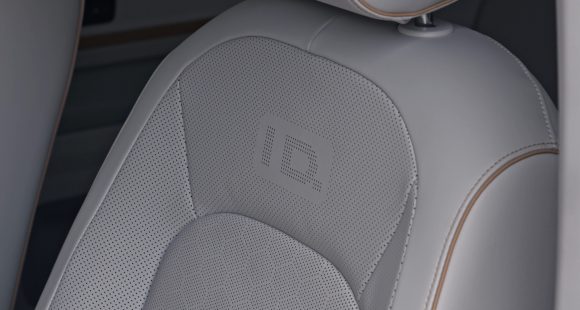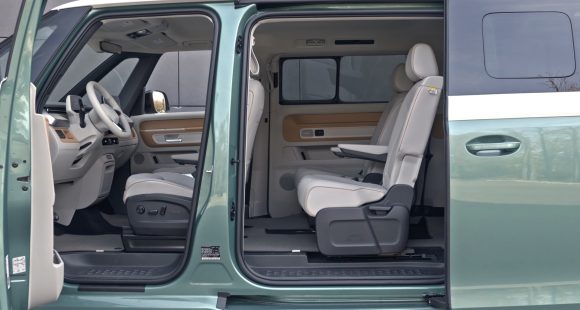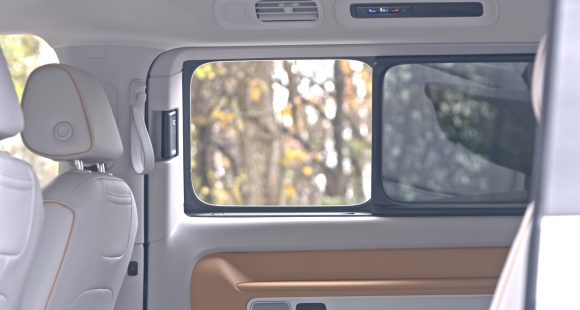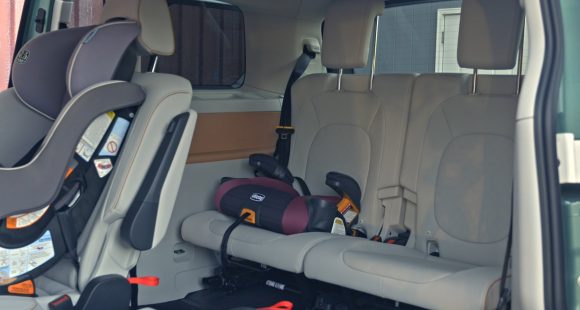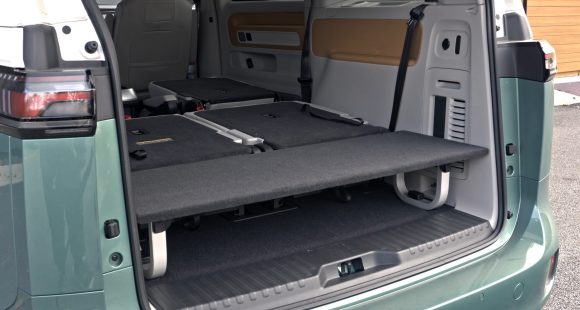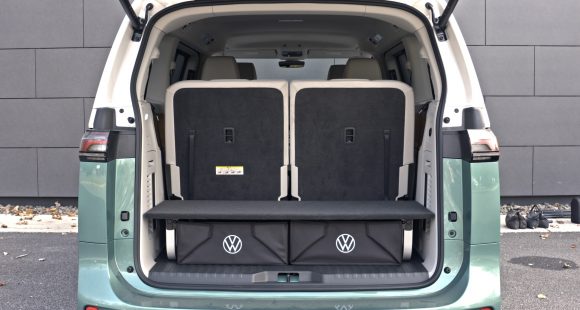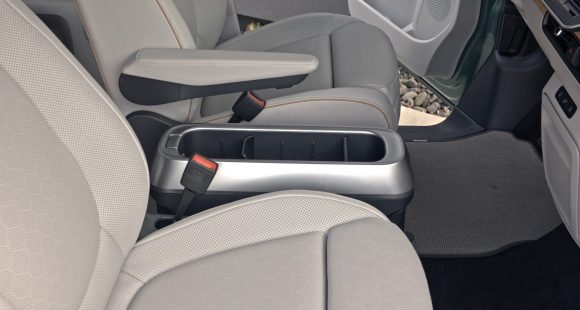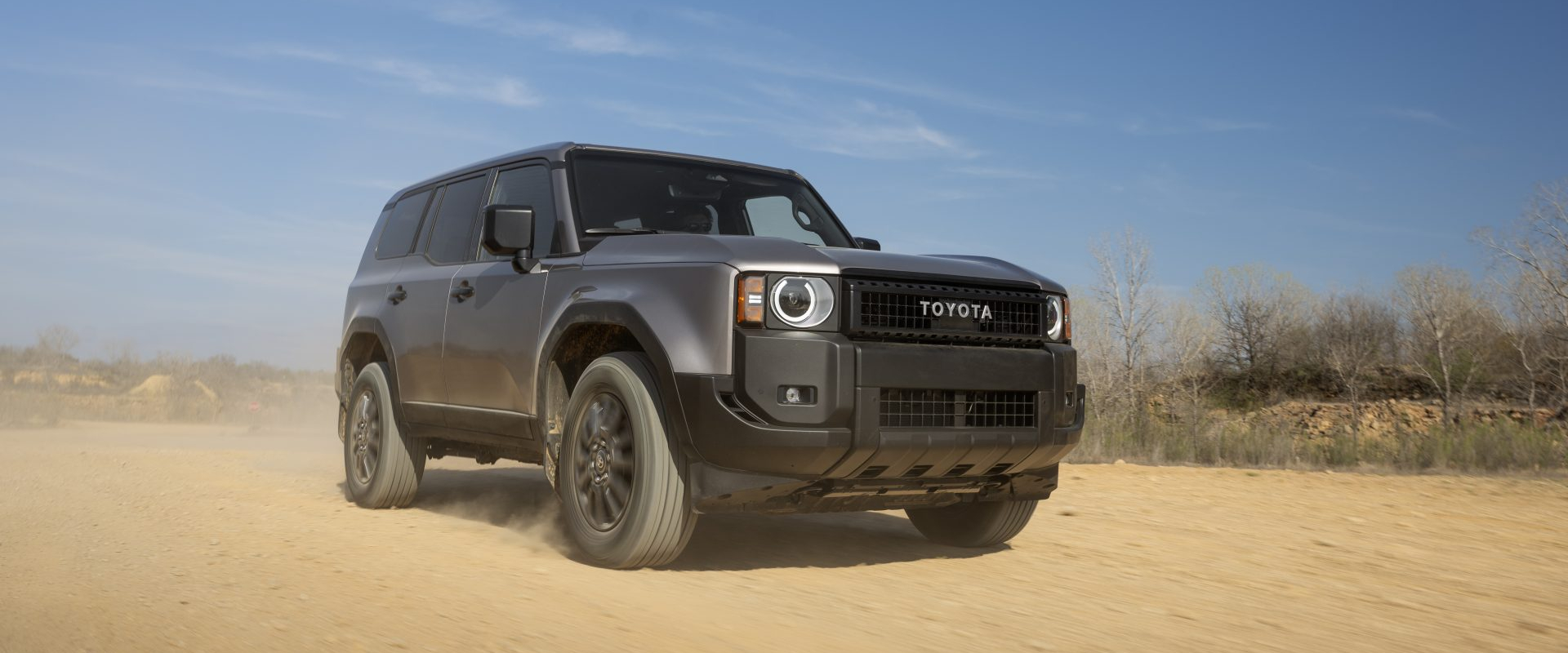2016 Nissan Maxima
This week we test the 8th generation Nissan Maxima. And once again Nissan has promised a return of the “four door sports car” driving experience that made Maximas of the early 90s so exciting. This car certainly looks exciting. So let’s see if this Maxima’s excitement runs more than skin deep.
The 2016 Nissan Maxima is one of the most stimulating to see sedans we’ve come across in years. It’s rakish and radical. The sexy sheet metal is supposedly inspired by jets. Now, we haven’t heard that line since the 50’s; regardless it is a looker for sure.
Nissan’s V-motion design theme sets the deep grille, and is echoed along the rest of the car as well. This Maxima adopts the floating roof look of the Murano, with partially blacked C-pillars, and a fast roof that gives the side glass a chopped appearance. Standard, beefy 18 inch wheels further compress the visual height.
But if you think this means a claustrophobic interior you’re wrong. Space is plentiful, yet still engaging, and a lot more upscale. Now, that doesn’t mean Maxima has gone near-luxury. Nissan feels there is plenty of room for classy materials in mass market mid-size sedans.
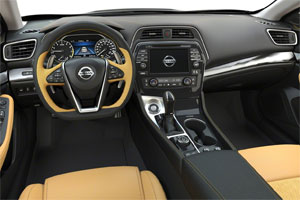 The list of standard features is also impressive, including Nissan Connect with 8.0-inch touchscreen navigation, a 7.0-inch Drive-Assist display in the instrument cluster, remote start, full power seats, and dual-zone climate.
The list of standard features is also impressive, including Nissan Connect with 8.0-inch touchscreen navigation, a 7.0-inch Drive-Assist display in the instrument cluster, remote start, full power seats, and dual-zone climate.
Though oddly enough, only a basic backup camera. Only top-level Platinum trim gets Nissan’s Around View Monitor. A terrific feature you’ll find on a Versa Note for less than 20-grand. SL-trim and above add Forward Emergency Braking which in our low speed barrier test mitigated stopping distances without consistency.
On the plus side the Zero Gravity front seats were as comfy and well bolstered as advertised. Rear seats equally so, and there’s almost full-size car room back here. Storage space? Yep, got plenty of that as well, at 14.3 cubic-ft.
Any sporty car regardless of how many doors needs invigorating power. Here the new Maxima complies with a familiar 3.5-liter V6. But, with the redesign comes significant updates including GT-R goodies like sodium-filled valves. Horsepower climbs to an even 300; torque remains the same at 261 lb-ft.
The big downer to still the CVT transmission. But, it’s also upgraded and tightened up for better response, and thankfully, quieter operation. Shift paddles are nice and big; and are intelligently mounted on the steering column, not on the wheel.
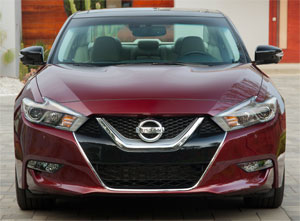 So, the question remains. Can this front driver live up to its 4DSC hype? That’s a hard thing to do. We found the new Maxima drives solid. At a decent clip it remains very flat through corners, and overall feels light on its feel. Indeed, 82-lbs. has been shaved from the previous car.
So, the question remains. Can this front driver live up to its 4DSC hype? That’s a hard thing to do. We found the new Maxima drives solid. At a decent clip it remains very flat through corners, and overall feels light on its feel. Indeed, 82-lbs. has been shaved from the previous car.
To get the full experience, opt for the SR model with its unique dampers and larger front stabilizer bar. As well as an Integrated Dynamic-control Module with Active Ride Control.
We navigated the cones quickly, with sharp turn-ins and a firm feel to the wheel. Braking is undramatic, 60 to 0 in 125 feet. That’s fine, if not as short as we’d like.
Still, at this point, are we starting to be believers? Yep! But acceleration runs made us back off a bit. As one test driver put it, “the engine is willin’, but the trans is illin’”
The Maxima jumped off the line quickly, hitting 60 in 6.1-seconds. 2/10ths quicker than last gen. But after simulating a shift to second, there were awkward power surges that had our car torque steering down the track. Still the full ¼-mile went by fast at 14.3-seconds at 102 miles-per-hour. Now Nissan, give us a non-rubber band tranny and we’ll buy in completely.
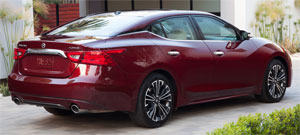 New to the Maxima this year are selectable driving modes; with Sport quickening throttle response and steering, as well as adjusting the tuning of the CVT and the Active Sound Enhancement system.
New to the Maxima this year are selectable driving modes; with Sport quickening throttle response and steering, as well as adjusting the tuning of the CVT and the Active Sound Enhancement system.
Out on the road, whether you believe it is a true sport sedan or not, it sure feels like one when you’re behind the wheel. You sit very low, and the thick steering wheel feels great in your hands.
Few standalone options are available with five trim levels starting at $33,235. This SR starts at $38,495.
OK, it’s time to put up or shut up.
Does the 2016 Nissan Maxima deserve the “Four Door Sports Car” label? It’s certainly exciting inside and out, and with the exception of the CVT, an impressive performer for its size, sitting far above the typical mid-size family car class. So, we give it a qualified “yes”. But without reservations, it is the best Maxima, and the best Nissan badged sedan, we’ve ever driven.
Specifications
- Engine: 3.5-liter V6
- Horsepower: 300
- Torque: 261 lb-ft.
- 0-60 mph: 6.1 seconds
- 1/4 mile: 14.3 seconds @ 102 mph
2025 Volkswagen ID. Buzz
Volkswagen Brings Beetlemania Level Of Excitement To Minivan Segment
The duty of upholding Volkswagen’s heritage has most recently been delegated to small legacy car names like Golf and Jetta. But hold on! A much larger, totally modern take on VW’s classic microbus has just buzzed over the horizon— the all-electric ID. Buzz. It’s been at the top of our minds since we first saw the concept back in 2017. Well, it’s finally here, so let’s get our groove into drive!
This 2025 Volkswagen ID. Buzz has indeed created the most buzz around Volkswagen since the Beetle’s return to the U.S. in the late 1990s. We couldn’t drive it anywhere without drawing a crowd. No wonder, just about everyone has a VW Microbus story to tell, and seeing this reimagined version rolling down the street brings back all those memories.
VW really pulled it off as far as we’re concerned, as it looks great without appearing over the top. All the cues are here: Big VW logo front and center, lots of greenhouse including A-pillar windows and mini sliders for the second-row passengers, D-pillar air vents, and two-tone wheels. And while its appearance may be pure retro, its drivetrain is far from it, as the ID. Buzz is all-electric, and unlike the new Beetle, the Buzz does retain the original Microbus’ rear-drive architecture.
Powering those rear wheels is a 210-kW motor drawing juice from a 91-kWh battery for a range of 234 miles; 200-kW max charging will get you to 80% in about 26 minutes. Buyers can add another small 80-kW motor up front for 4motion all-wheel-drive and an increase of total output from 282 to 335 horsepower with a combined 512 lb-ft of torque. It uses the same battery, but range estimates drop just slightly to 231 miles. But while those numbers are modest, we also found them to be quite conservative, as we observed as many as 287 miles available in our all-wheel-drive tester’s gauge display and were on pace for 273 miles in our driving loop.
One throwback theme that may be a turnoff to some is that it’s quite a step up into the Buzz’s front seats, but there’s certainly a commanding view of the road once you climb in. Second row seating can be either a three-place bench or a pair of captain’s chairs, so there’s generous room for seven or six passengers. The captain’s chairs in our Pro S Plus offer good support and very easy access to the third row.
Lots of flexibility too with the option to simply fold the seats or remove them altogether.
With the sliding side doors and a wide opening rear hatch, there’s plenty of access for loading big sport utility amounts of cargo. Lots of flexibility too with the option to simply fold the seats or remove them altogether, and the ability to create a full-length flat floor with a rear cargo shelf that covers some handy removable storage bins. There’s 18.6 cubic-feet of space behind the third row, 75.5 behind the second, and a max of 145.5. That’s more than a Chevrolet Tahoe. For smaller items, there are lots of cubbies throughout the cabin, along with a standard Buzz Box that can be moved to multiple locations.
With a design that prioritizes retro form and modern function over aero efficiency, the 4motion equipped ID. Buzz earns a Fair efficiency rating, using 42-kWh of electricity per 100 miles, and we weren’t sure what to expect at our Mason Dixon test track.
What we found was great torque off the line and drama free launches to 60 in just 5.3 seconds. It was very stable at speed and power delivery stayed steady most of the way down the track until we reached about 90 mph, when it began to taper off just before we finished the quarter-mile in 14.0 seconds flat at 97 mph.
With 1,200-lbs. of battery weight nestled in its 127.5-inch wheelbase, the Buzz felt planted to the pavement through our handling course. There was quite a bit of body roll to deal with, but surprisingly little understeer. In panic braking runs, pedal response was inconsistent, feeling soft at times, pushing back hard at others; but through it all, results were quite good, stopping from 60 in an average of just 108 feet.
Three interior themes are available, this Dune is the brightest, featuring coastal inspired wood optic dash décor, “gray and clay” leatherette surfaces, and a high-mounted central 12.9-inch touchscreen. Pricing starts with a rear-wheel-drive Pro S at $61,545; this Pro S Plus begins at $65,045, add another $4,500 for 4motion, which brings a few extra features along with all-wheel drive.
Retro design with old-school VW charm, modern EV drivetrain, big SUV capacity merged with minivan flexibility; it all comes together in this 2025 Volkswagen ID. Buzz. It’s easily one of the coolest rides of the year and one that will likely keep Volkswagen dealers buzzing for years to come, and that’s something no other people and things mover can say.
Specifications
As Tested
- Motor Setup: Dual-Motor AWD
- Battery Size: 91-kWh
- Horsepower: 335
- Torque: 512 lb-ft
- EPA Range: 231 miles
- 0-60 mph: 5.3 seconds
- 1/4 Mile: 14.0 seconds at 97 mph
- Braking, 60-0: 108 feet
- MW Test Loop: ~ 273 miles
2024 Toyota Land Cruiser
Toyota’s Go Anywhere Globetrotter Returns To U.S.
Every once in a while, we all need a reset. A time to get back to basics and prioritize the things that really matter. Well, for the Toyota Land Cruiser that time is now. So, let’s find out if that means bigger and better things for Toyota’s iconic off-roader.
The Toyota Land Cruiser’s status among the global off-road community is legendary, and it’s hard to imagine there’s any corner of the earth where a Land Cruiser hasn’t kicked up a little dust or mud. Well, 2024 sees the return of the Land Cruiser to the U.S. market after a 3-year hiatus, getting a major reset for the journey.
The reset comes mostly by no longer being based on the large three-row “300-series” chassis, but a new version of the smaller “200-series,” now known as the J250. As with the latest Tacoma, it uses the Tundra pickup’s full-size steel frame.
While the main Land Cruiser model, which goes by simply Land Cruiser, is packed full of luxury and convenience features, there is also a stripped-down model known as the 1958, honoring the first year the Land Cruiser made landfall here in North America. And it is that 1958 we have here, and we were glad to see it, as it also celebrates the original’s back-to-basics approach as a blank canvas for you to personalize as you tackle more and more adventures.
Not that it’s fully stripped down, as 8-inch touchscreen infotainment, a 7-inch full-color multi-information display, and automatic climate control are still standard. Plus, some seriously durable materials, and great heated cloth front seats that throw off some get serious 1990s Tacoma vibes.
But outside, there’s a definite lack of flashy trim and basic looking 18-inch wheels with Yokohama Geolander all-season tires; plus, big chunky bumpers and tilt-up back glass, which is a rarity that we appreciate. Though there is a little too much plastic in places that are sure to see some abuse if you do any significant off-roading.
It even feels a little rough around the edges, but for us it just adds to the rugged old-school utility vibe in a good way.
We did just that, both here in the Mid-Atlantic as well as in the California desert; and while there are some tech-forward driving aids, the actual hardware is in most cases plenty to get things done. That includes standard full-time dual-range four-wheel-drive, locking center and rear diffs, and 8.7-inches of ground clearance. A front stabilizer bar disconnect is also available to allow for increased articulation.
Who needs a V6 or even a V8 when you’ve got Toyota’s i-FORCE MAX setup at your disposal with 326 horsepower and 465 lb-ft of torque coming from a 2.4-liter turbo-four with an electric motor sandwiched between the engine and its eight-speed automatic transmission. Low speed torque delivery is impressive. It even feels a little rough around the edges, which may be a turn off to some, but for us it just adds to the rugged old-school utility vibe in a good way.
And it certainly feels quicker than an off roader needs to be, with an instant torque dump as soon as we eased on the throttle at our Mason Dixon test track; helping us get to 60 in 8.1 seconds and through the quarter-mile in 16.3 seconds at 86 mph. Considering the Land Cruiser’s terrain conquering mission, it behaved quite well in our handling course; it was plenty responsive to inputs, with less body roll than we expected and plenty of grip from the tires. The steering was light and quick but as expected didn’t provide much feel. Other than significant nosedive, braking performance was exceptional. Only 107-feet to panic stop us from 60 mph.
With the shift to the smaller size, there’s no more third row available, and cargo capacity now comes in at 46.2 cubic-feet with a max of a still healthy 82.1. Now, the best part of the Land Cruiser’s return is the entry price of $57,445. That’s about 30-grand less than what the last Land Cruiser went for back in 2021.
Whether it’s over the top fashion trends, mullets, or zombies; just when you think they’re dead, they come roaring back to life. Of course, we’re much happier to see the resurrection of this 2024 Toyota Land Cruiser than any of those things. Toyota is one brand that still recognizes the value of full-framed rugged rigs and has also acknowledged that sometimes less really is more. The Godfather of Toyota off-roading is back and better than ever.







